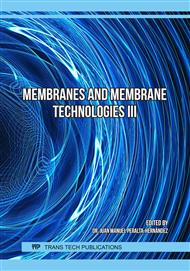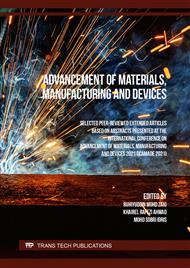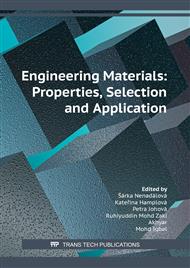p.55
p.61
p.71
p.77
p.91
p.97
p.105
p.113
p.119
Studies on Antifouling Characteristic of the Magnetic Field Induced-PES-Fe3O4 Membrane for Water Remediation
Abstract:
In this study Fe3O4-polyethersulfone (PES) membranes were prepared in the present of a magnetic field or without a magnetic field by using the phase inversion process. A comparison of membrane properties was investigated. Scanning Electron Microscopy (SEM) and Energy Dispersive X-ray Spectroscopy (EDX) were used to determine the morphology and chemical composition of the prepared membranes. Furthermore, the fouling analysis of the non-magnetized and magnetized Fe3O4-PES membranes were also conducted through the filtration study. The pure water flux of membranes increased from 158.49±11.96 L/m2·hr (neat PES) to 187.06±6.54 L/m2·hr (magnetized Fe3O4-PES). These results showed that the magnetized Fe3O4-PES membrane not only had the high pure water flux but also had a high humic acid (HA) rejection and good antifouling ability. As such, magnetized Fe3O4-PES membrane had excellent comprehensive properties which could use for water remediation.
Info:
Periodical:
Pages:
91-96
Citation:
Online since:
August 2022
Price:
Сopyright:
© 2022 Trans Tech Publications Ltd. All Rights Reserved
Share:
Citation:




